
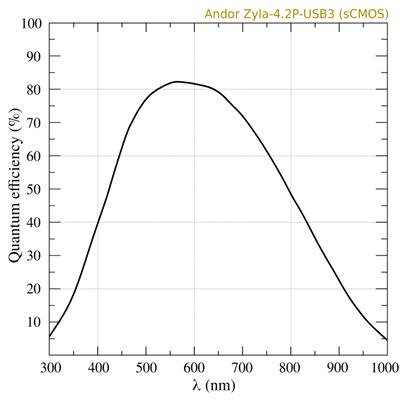
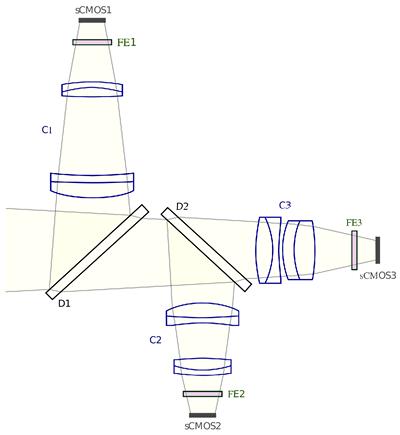
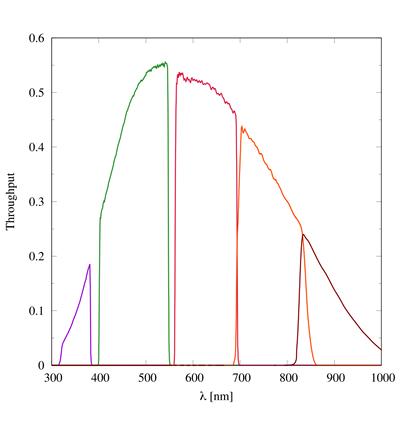
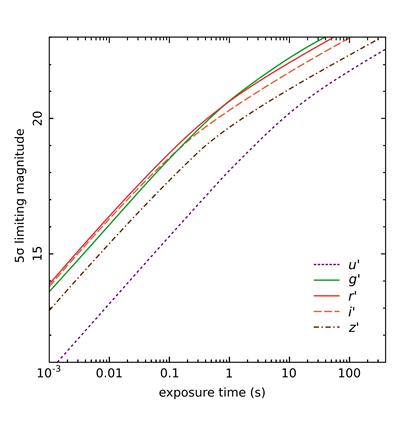
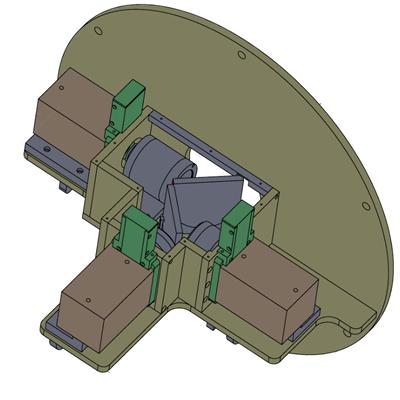
This new triple-band optical system is equipped with three 2,048×2,048 pixel Andor Zyla sCMOS cameras and a set of SDSS filters allowing optical coverage in the 320-1,100 nm range. OPTICAM allow strictly simultaneous observations with 3 of the 5 available SDSS u'g'r'i'z' filters, reaching nominal exposure times of the order of sub-seconds. Milli-second exposures can be reached as function of the pixel array size. Due to the high-performance profile of OPTICAM, a wide range of fast-variability astrophysical objects can be targeted including X-ray binaries, pulsating white dwarfs, accreting compact objects, exoplanets, pulsars, active/flaring late-type stars and brown dwarf, eclipsing binaries and NLS1 AGNs. Traditional photometry of point-like sources and extended objects can also be performed in the usual way. In order to maximize the long-term impact of the project, and its benefits to the astronomical community, we will ensure that all observations taken with OPTICAM become publicly available. Data will only be proprietary for six months after the observations were taken. More details can be found in Castro et al. (2019) .






The OPTICAM configuration will allow us to simultaneously observe the same fields with the 3 Andor sCMOS cameras, one in each arm, respectively. The optical system was carefully designed with the intention of maximizing as much as possible the actual field-of-view (FoV) of the system. The final FoV values are shown in this table.
| Arm | Filte | FoV (arcmin²) | Camera |
|---|---|---|---|
| 1 | (u’,g’) | 4.77×4.77 | C1 |
| 2 | (r’) | 4.80×4.80 | C2 |
| 3 | (i’,z’) | 5.67×5.67 | C3 |
OPTICAM will have a set of SDSS filters ( Fukugita et al. 1996 ), which is the most common filter-set in modern Astronomy. These filters provide high-transmission, allowing for the detection of faint objects, and, at the same time, cover the entire optical wavelength range. We have acquired an Astrodon Gen2 set of SDSS filters (320–1000 nm). The transmission curves for the five broad band filtres are shown above. This filter set provides a peak transmission > 95% (>90% for u’). OPTICAM will use simultaneously three different Andor Zyla 4.2-Plus USB3.0 cameras, each one associated with its respective filter exchanger.
Maximum sustainable frame rates and transfer rates for various vertically centered ROIs at a 540 MHz readout speed. The values shown in this table were obtained assuming a 1×1 binning. BTR is the byte-based transfer rate through the USB 3.0 port, for the respective pixel array, and FPS is the number of generated frames per second.
| Array Size | Frame Rate | BTR | Frame Rate | BTR |
|---|---|---|---|---|
| [FPS@12-bit] | [Mb/s] | [FPS@16-bit] | [Mb/s] | |
| 2,048×2,048 | 53 | 424 | 40 | 320 |
| 1,920×1,080 | 107 | 423.2 | 80 | 316.4 |
| 512×512 | 403 | 201.5 | 403 | 201.5 |
| 128×128 | 1,578 | 49.3 | 1,578 | 49.3 |
3 filters can be used simultaneously. The user will select the precise combination of filters to be used among the five available SDSS filters at observation time. At this stage of the project the filter must be manually positioned in the respective filter exchanger (FE).
| Filter exchanger | Filter in each position | ||
|---|---|---|---|
| Pos. 1 | Pos. 2 | Pos. 3 | |
| FE1 | u' | g | ... |
| FE2 | r' | ... | ... |
| FE3 | i' | z | ... |
Andor Zyla 4.2-PLUS USB3.0 is a state-of-the-art sCMOS camera sensitive in the 300-1,100 nm range with a maximum quantum efficiency (QE) of 82% and a linearity better than 99.8% (>99.9% for low light range). This detector has full-frame pixel array of 2,048x2,048 pixels (6.5 μm pixels), a pixel well depth of 30,000 e⁻ and exceptional data transfer efficiency. The sCMOS camera is capable of delivering up to 53 fps in the 12-bit full-frame configuration and up to 40 fps in the 16-bit mode. By using a different region of interest (ROI), it is possible to reach even higher readout speeds. In this table we show the main list of specifications. A more detailed description can be found at the Oxford Instruments website.
| General Specifications | |
|---|---|
| Sensor type | Front Illuminated Scientific CMOS |
| Pixel size | 2,048 x 2,048 (4.2 Megapixel) |
| Pixel size | 6.5 μm |
| Sensor size | 13.3 x 13.3 mm |
| Pixel readout rate (MHz) | Fast Read 540 (270 MHz x 2 sensor halves) |
| Read noise (e ) Median [rms] | 1.10 [1.3] @ 540 MHz |
| Maximum Quantum Efficiency | 82 % |
| Sensor Operating Temperature | 0° C (up to 27 °C ambient) |
| Readout modes | Rolling Shutter |
| Maximum dynamic range | 33,000:1 |
| Pixel binning | Hardware binning: 2×2, 3×3, 4×4, 8×8 |
| Data range | 12-bit & 16-bit |
| Interface options | USB 3.0 |
| Hardware timestamp accuracy | FPGA generated timestamp with 25ns accuracy |
| Linearity | >99.8 % |
OPTICAM is designed to operate at an effective f /7.9 on the Cassegrain focus of the OAN-SPM 2.1 m telescope. OPTICAM have three arms. The beam enters from the OAN-SPM 2.1 m telescope (from the left as shown in the optical layout figure), it finds the first dichroic (D1) beam splitter in Arm 1 where the initial beam is split sending the reflected light towards the first optical camera (C1). This camera is optimised for the use of u' and r' filters (from 320 to 550 nm). In the same way, the transmitted beam is then split again towards the optical cameras C2 and C3, which are optimised for r 0 (from 560 to 690 nm), and i' and z' filters (from 690 to 1,100 nm) in Arms 2 and 3, respectively. Custom filter exchangers are placed in front of the sCMOS cameras. The filter exchanger mechanism allows the desired filter to be placed in the optical path of the respective arm.